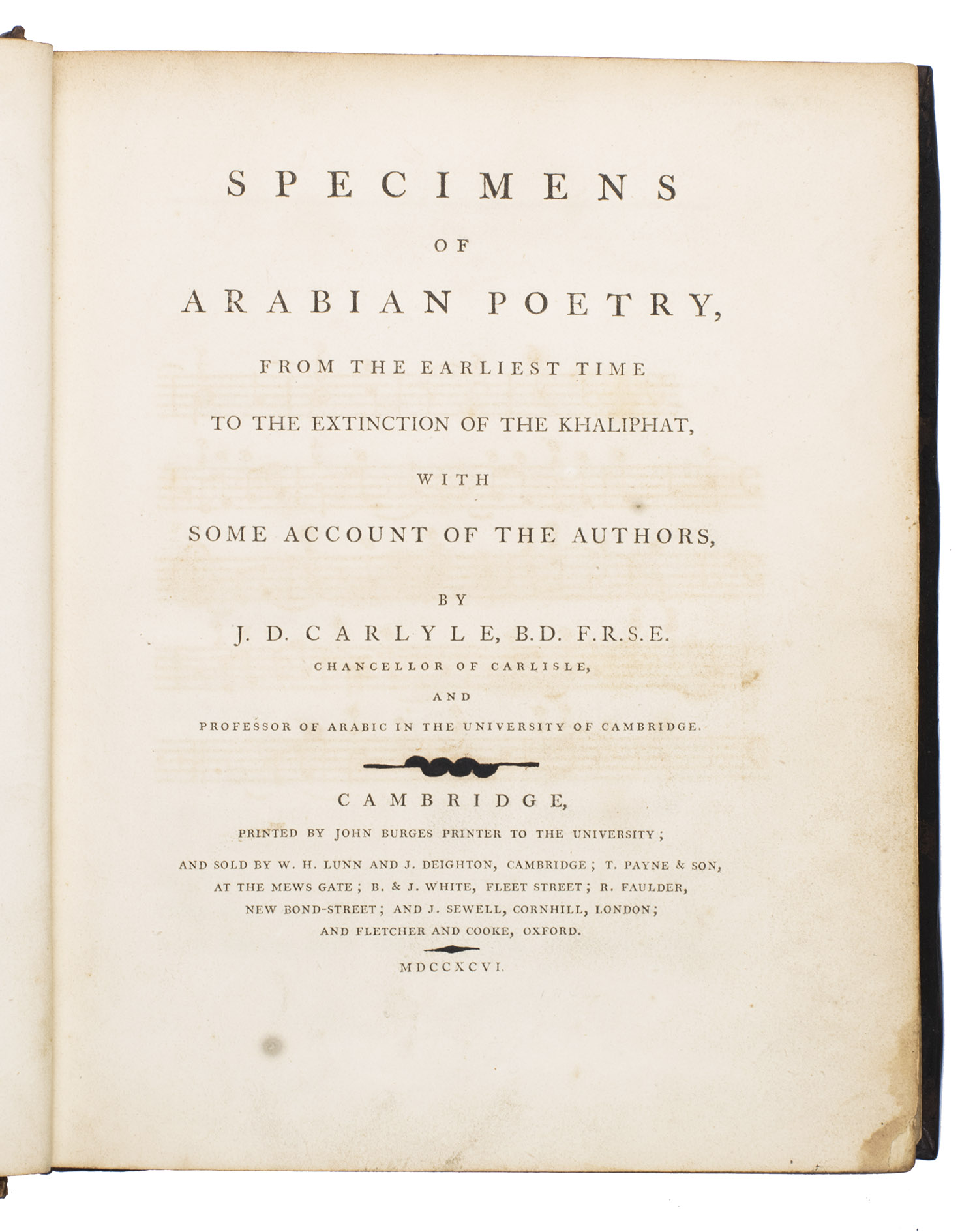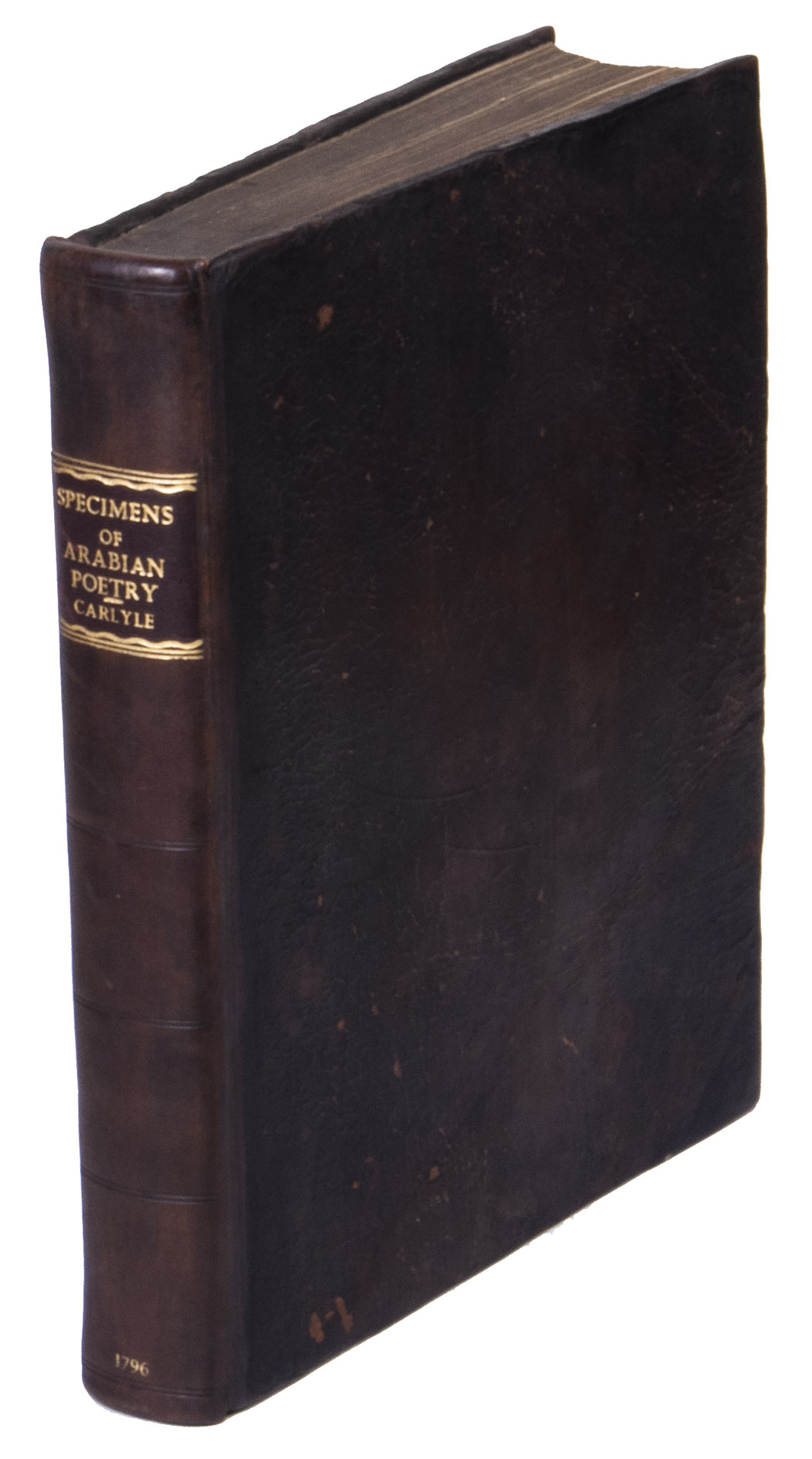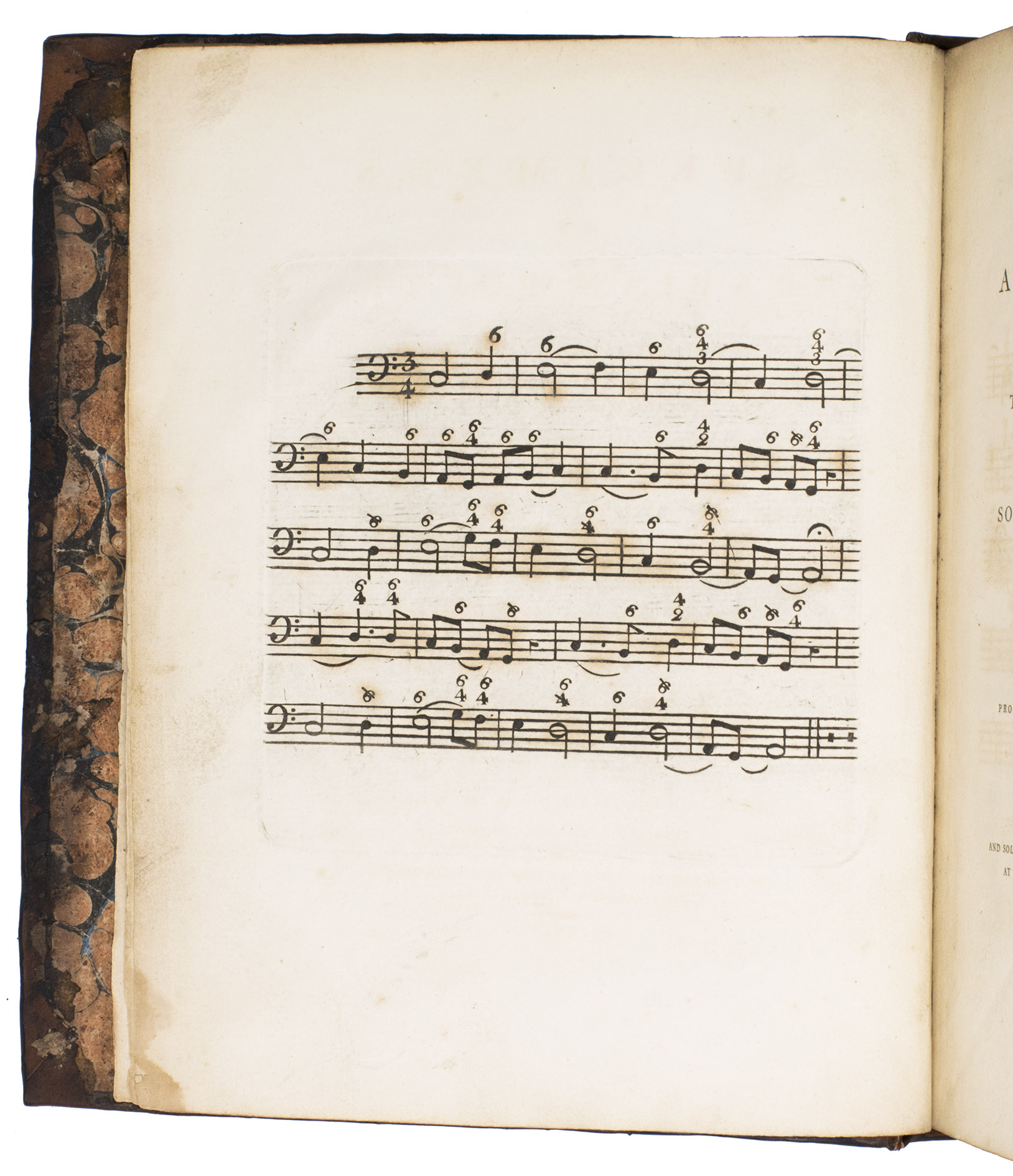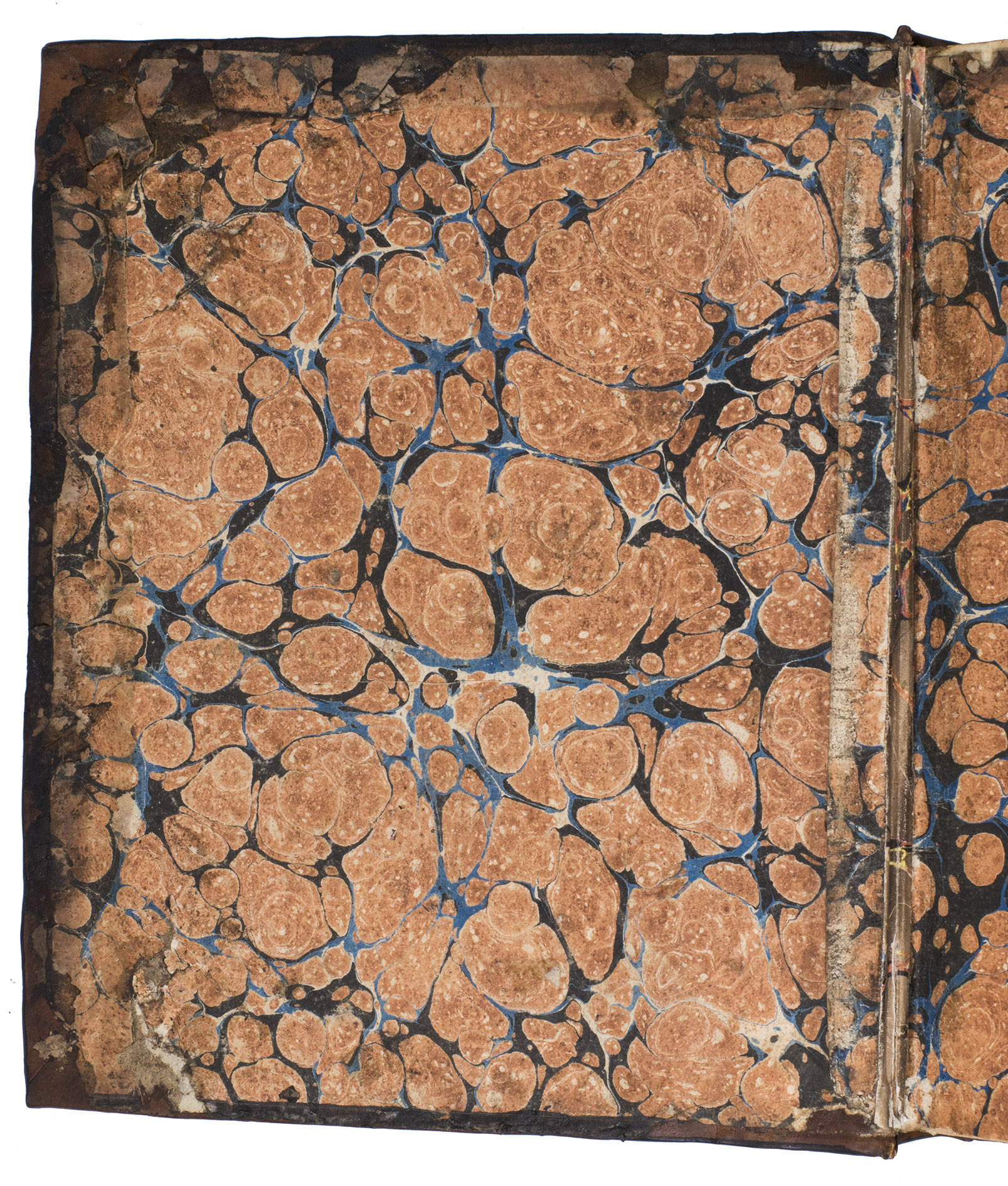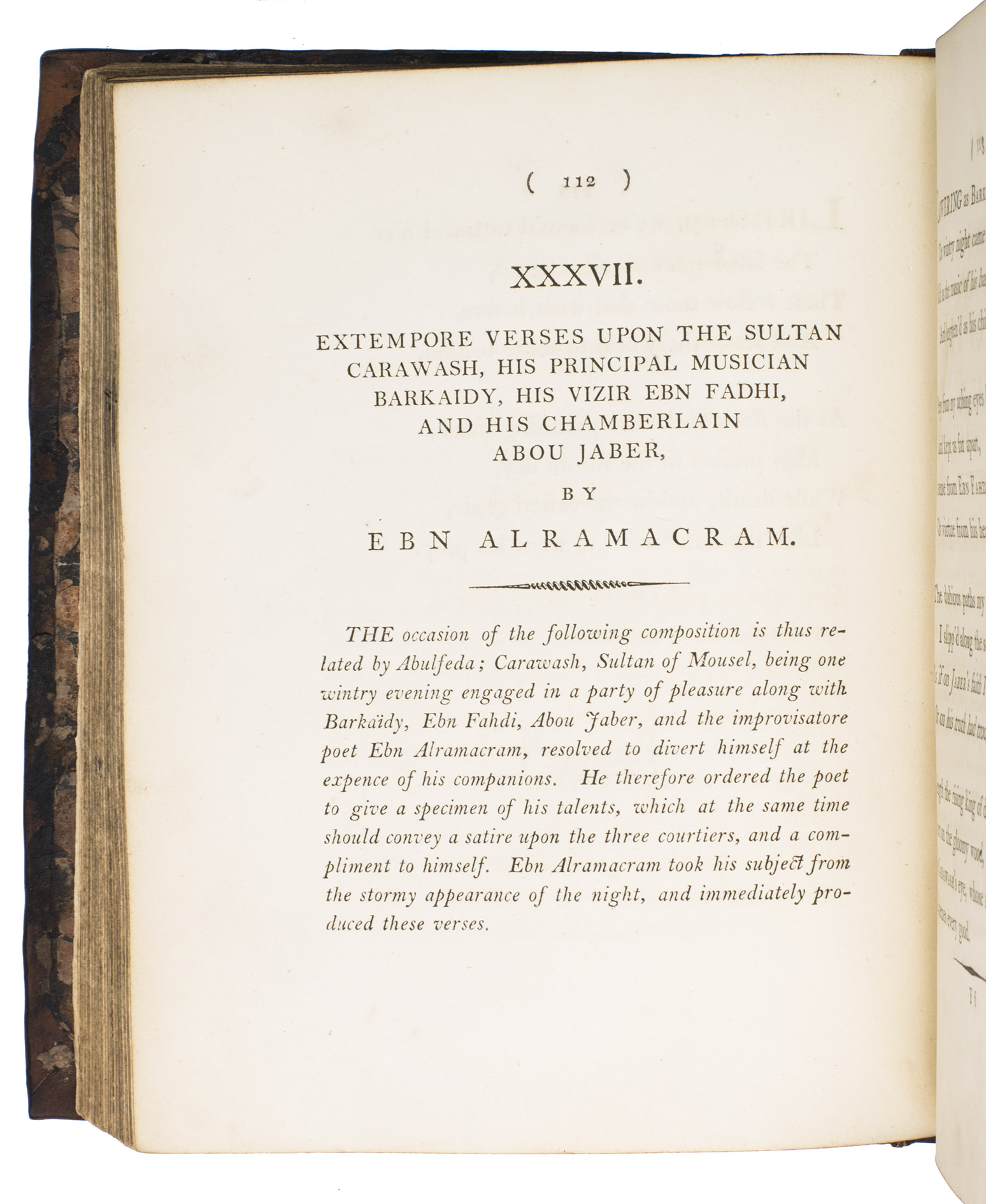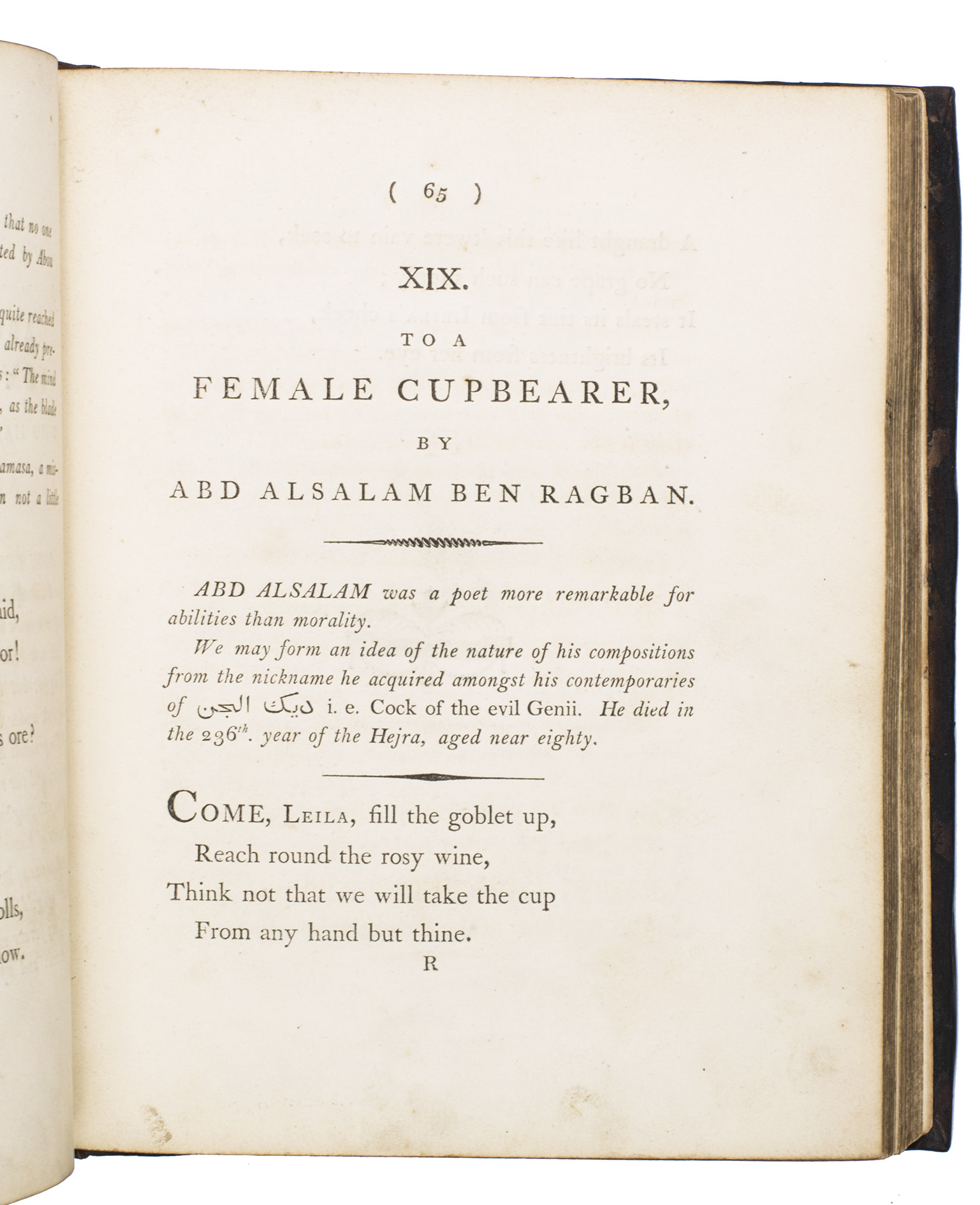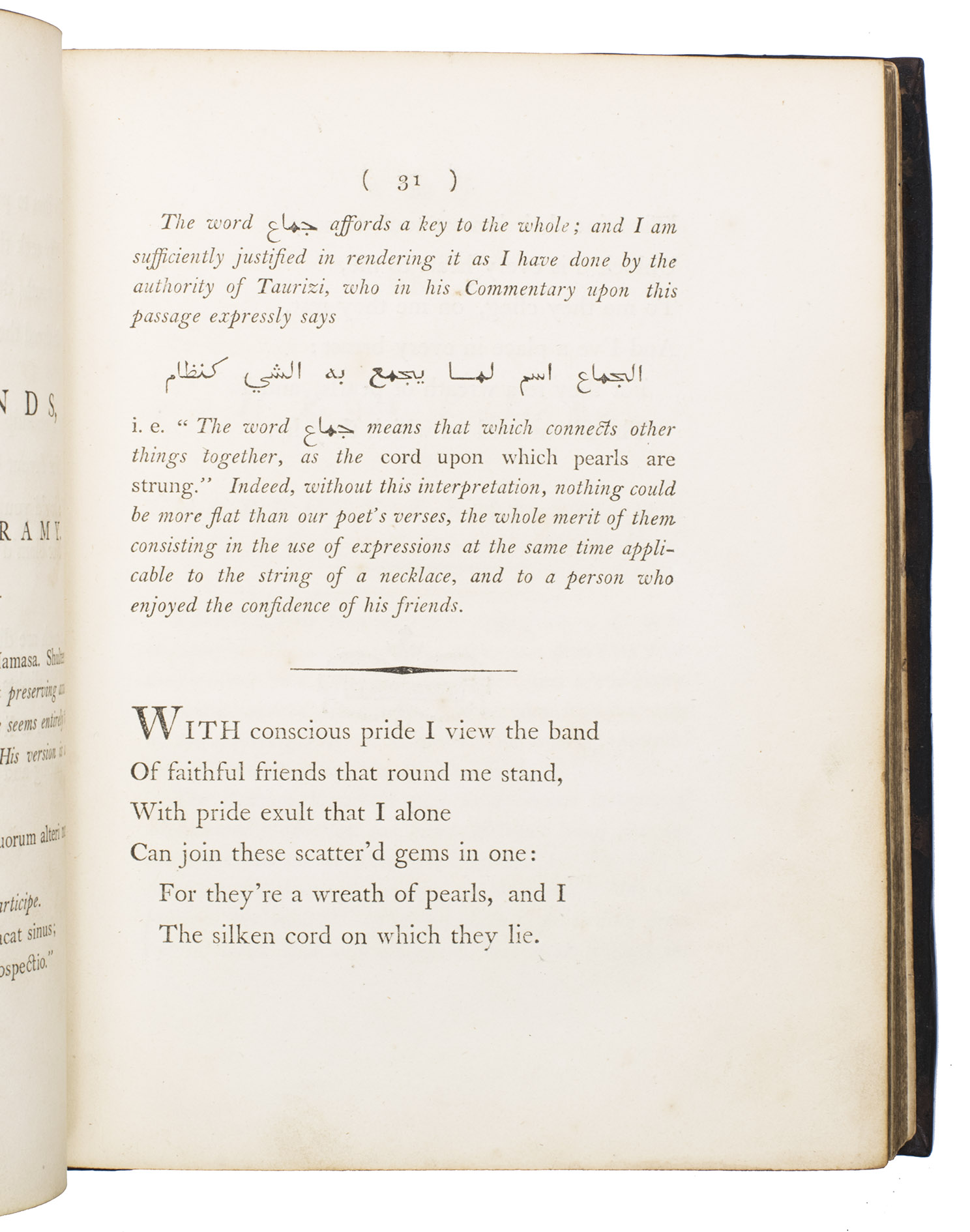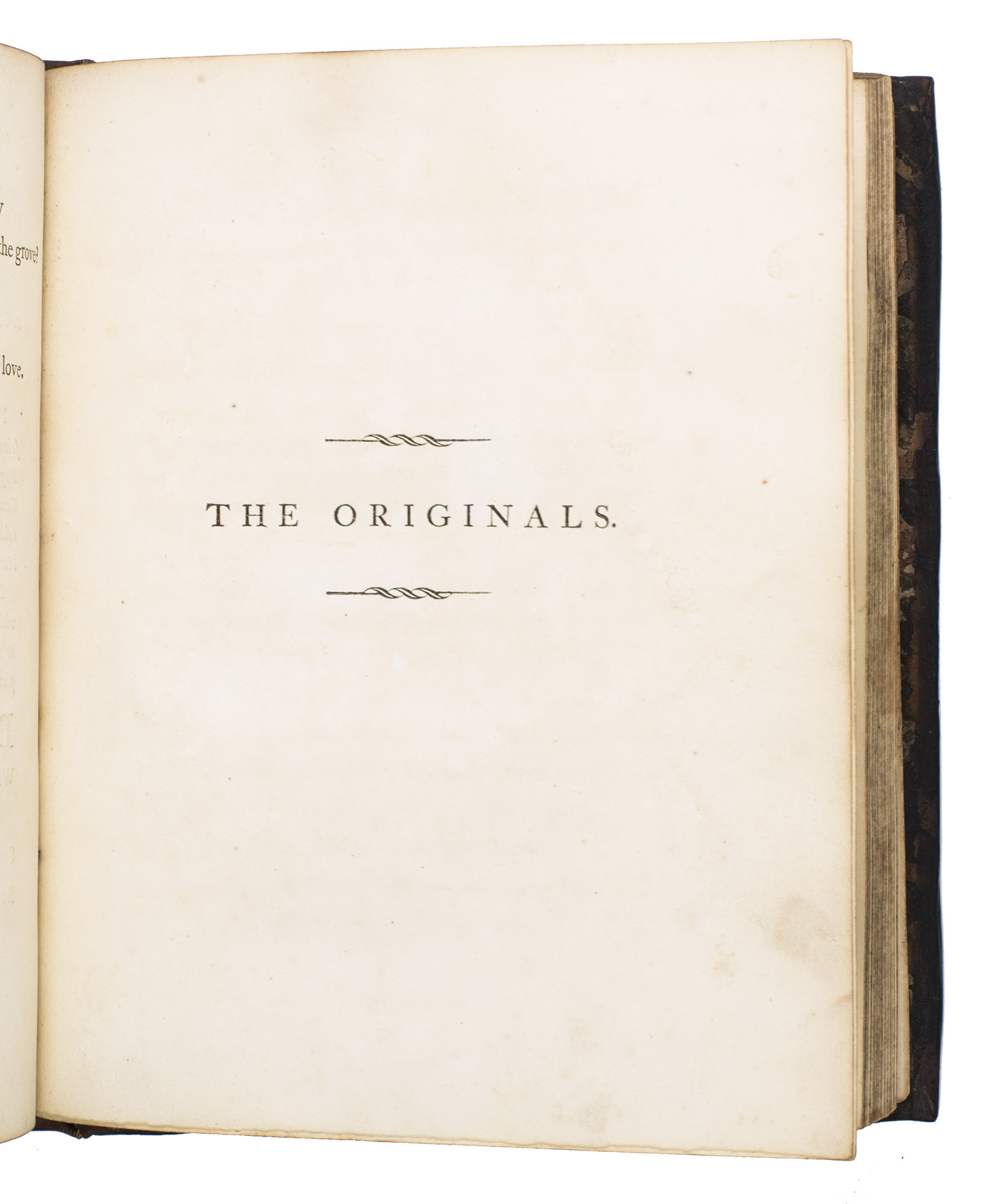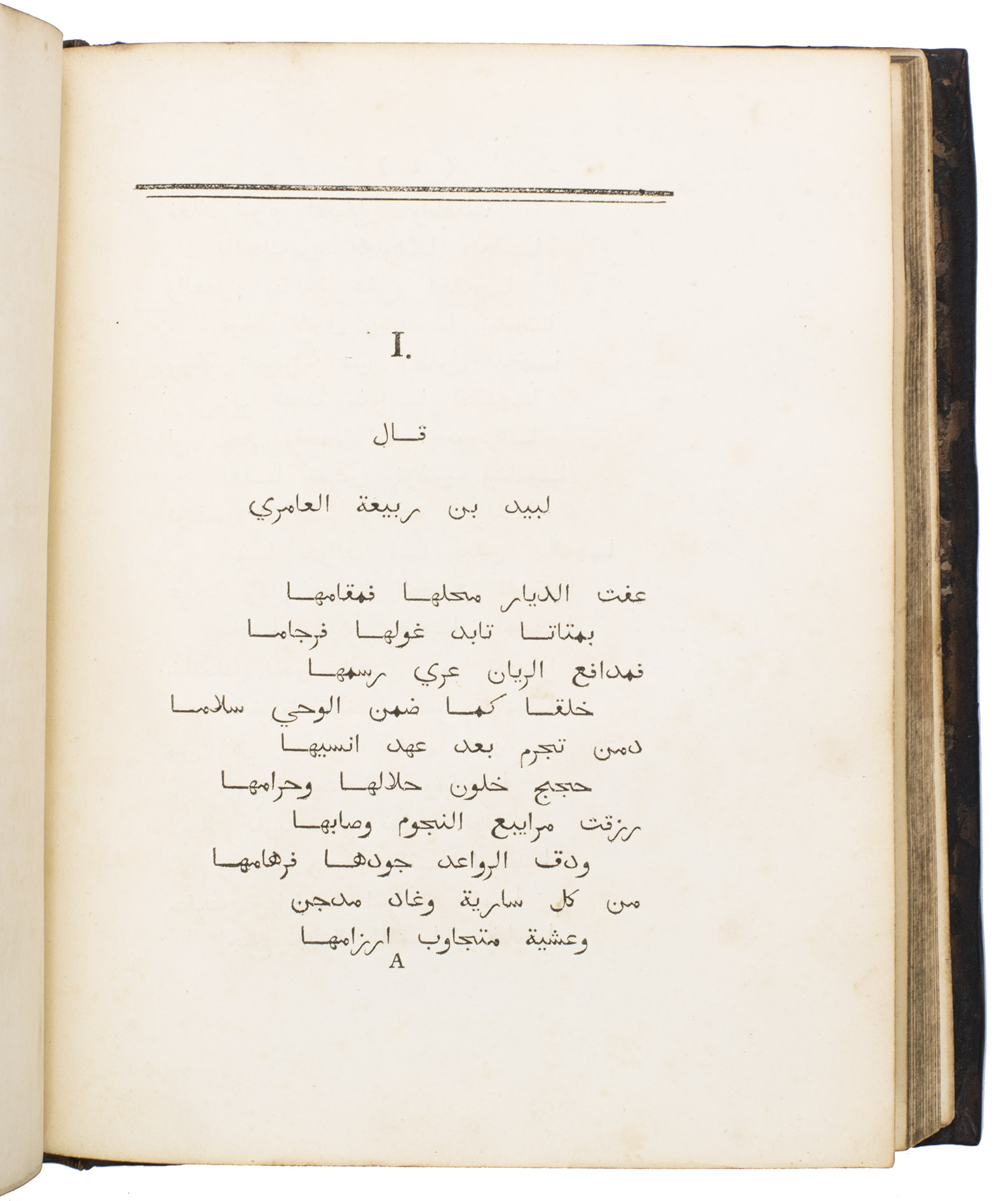CARLYLE, Joseph Dacre.
Specimens of Arabian poetry, from the earliest time to the extinction of the khalifphat, with some account of the authors.
Cambridge, Printed by John Burges printer to the university, 1796. 2 parts in 1 volume. 4to. With an engraved sheet with musical notation. Contemporary brown calf with a later spine. [8], IX, [1 blank], 180; [2], 71, [1 blank], [1], [1 blank] pp.
€ 6,500
First edition of this beautiful example of Orientalist scholarship, presenting sixty early Arabic poems in their original language with English translations. This work by Orientalist Joseph Dacre Carlyle (1758-1804) enabled the English to discover the beauty of Arabic literature. The poems, which cover a wide range of topics, offer a glimpse into the rich cultural heritage of the Arab world. Carlyle was the first to translate these poems into English. His translations became quite well-known and continued to be used in other works until at least the late 19th century.
The work is a collection of poems from the Arabian peninsula, between the 6th and 13th century. It includes a poem written on the tomb of Sayid by Abd Almalec Alharithy (dates unknown), a poem on avarice by Hatim al-Tai (?-578), and a poem about a thunder storm by Ibrahim Ben Khiret Abou Isaac (dates unknown). In addition to the poems themselves, the work also provides some biographical information about the poets, offering readers a deeper understanding of the historical and cultural context in which the poems were written. The work consists of two parts, the first contains the poems in English and the second in Arabic.
Carlyle was professor of Arabic at the University of Cambridge. He was appointed chaplain by Thomas Bruce, Lord Elgin (1766-1841) to the embassy at Constantinople in 1799, and pursued his researches in Eastern literature in a tour through Asia Minor, Palestine, Greece and Italy. During his travels, he collected several valuable Greek and Syriac manuscripts.
The work has been rebacked, the leather on the boards is dried and cracked, the flyleaf in the back has been replaced by a different marbled paper. The work is somewhat browned throughout, with mild foxing on the first few leaves, annotations in pencil on page 12 and 80. Otherwise in good condition. BMC 4, 1258.1197; Graesse II, p. 49.
Related Subjects:
